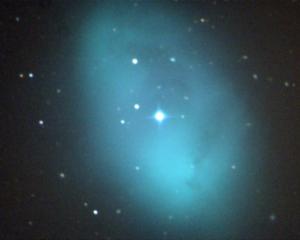
One of my favourite facts about Saturn is that it is less dense than water. If you could find a bathtub big enough, Saturn would float in it! Astronomy has many ways of making you seem insignificant.
We are entering prime time for observing Saturn. That’s because the planet is at opposition, the time of the year when it is closest to Earth and its brightest. Saturn rises at sunset and is high in the sky during the middle of the night. Saturn is presently moving through the constellation Aquarius. This part of the sky is devoid of bright stars, which means that weather permitting, Saturn will stand out as a distinctly yellow "star".

Telescopically, Saturn is, by far, the most beautiful world in our solar system. That’s because it is surrounded by the most extensive ring system of any planet. When Galileo pointed his simple telescope at Saturn in 1610, he knew something strange was happening around the planet; however, the optics in his telescope weren’t good enough to resolve the details. It wasn’t until 1659, when, using a telescope he designed and built himself, the Dutch astronomer Christian Huygens figured out a system of rings surrounded Saturn. It has to be said Huygens was a bit of a polymath; in addition to "discovering" the rings of Saturn, he also invented a pendulum clock and came up with the wave theory of light.
These days you don’t need to be as talented as Huygens to enjoy views of Saturn. Even relatively cheap plastic telescopes are good enough to show the planet’s rings and major moons.











